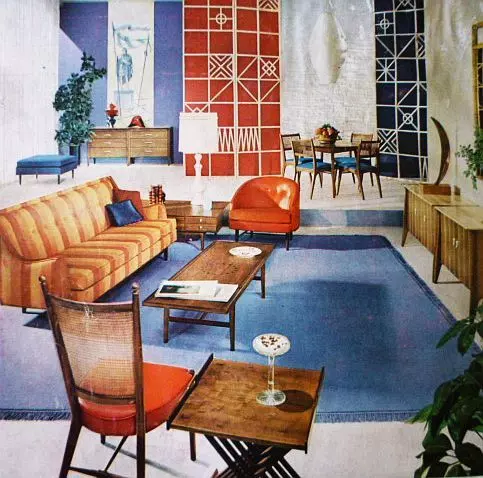Some styles become timeless favorites that embody sophistication and class. You might be like many others who are taking an interest in chic styles from the previous century due to popular TV shows and movies set in the era.
If you’re admiring aspects of modern and mid-century modern decor, discover the core principles of these designs and how to use them in your decorating.
The Difference Between Modern and Mid-Century Modern Design
The simplicity of these styles means you don’t have to be an expert to adopt them. Still, comprehending the defining characteristics can help you learn how to create interior masterpieces and avoid unsettling clashes.
Modern
People sometimes equate “modern” design with “contemporary,” but the two aren’t the same. While contemporary refers to whatever is new and trendy, modern design actually came to life in the early 1900s and stood apart from the ornate Victorian style.
The Industrial Revolution boosted the middle class and brought more people into the city. Homeowners and professionals desired a sleek layout that looked ahead to the future in architecture and home furnishings.
The governing principle of modern design is “form follows function.” Famed architects Louis Henry Sullivan and Frank Lloyd Wright promoted and popularized this aesthetic, and many subcategories sprung from modern, including industrial, Bohemian, farmhouse and mid-century modern.
A straight modern style minimizes the use of decorative accents. Designers in this mold emphasize symmetry, open space and comfort.
Mid-Century Modern
Mid-century modern design arose in the 1950s as a retro-futuristic style and offshoot of the modern movement. The decor relies on blending manmade materials with organic ones while maintaining clean lines. (Think “Mad Men.”)
Mid-century modern also focuses on uncluttered functionality. You can mix materials and aesthetics, making it an ideal motif for mixing with other styles. Look for a base of natural hues with bright accents.
One way mid-century modern updated modern design was by evolving the sectional sofa to accommodate lounging. The economic prosperity after World War II made living rooms the ideal place for entertaining, and you were more likely to find rooms with left or right-facing sectional sofas.
Ideas for a Modern or Mid-Century Modern Space
For either style, stick to neutral colors as the foundation of your color scheme, such as white, beige and black. Remember to use natural materials, such as wood and leather, that bring in the feeling of the outdoors. Untreated woods that display the wood grain create a subtle sense of spontaneity without disrupting the aesthetic.
Your furniture should have clean, straight lines and be functional. A leather ottoman would not be out of place since it adds to the comfort and serves a practical purpose. Your furnishings will typically have thin visible legs that give the appearance of floating.
Add some artificial reflective surfaces. Chrome, glass, steel and porcelain fit, but don’t add too many. For a more mid-century modern feel, bring in some pops of color to add character.
Perfect Options for Modern and Mid-Century Modern Decorating at Poly & Bark
Modern and mid-century modern pieces can add a classy touch to your home or office. To find high-quality, attractive decor that will fit your look, head over to Poly & Bark, the site with the internet’s favorite furniture.
Sources:
https://journalofantiques.com/antique-marketplace-news/mid-century-modern-hot-or-not-in-2022/




